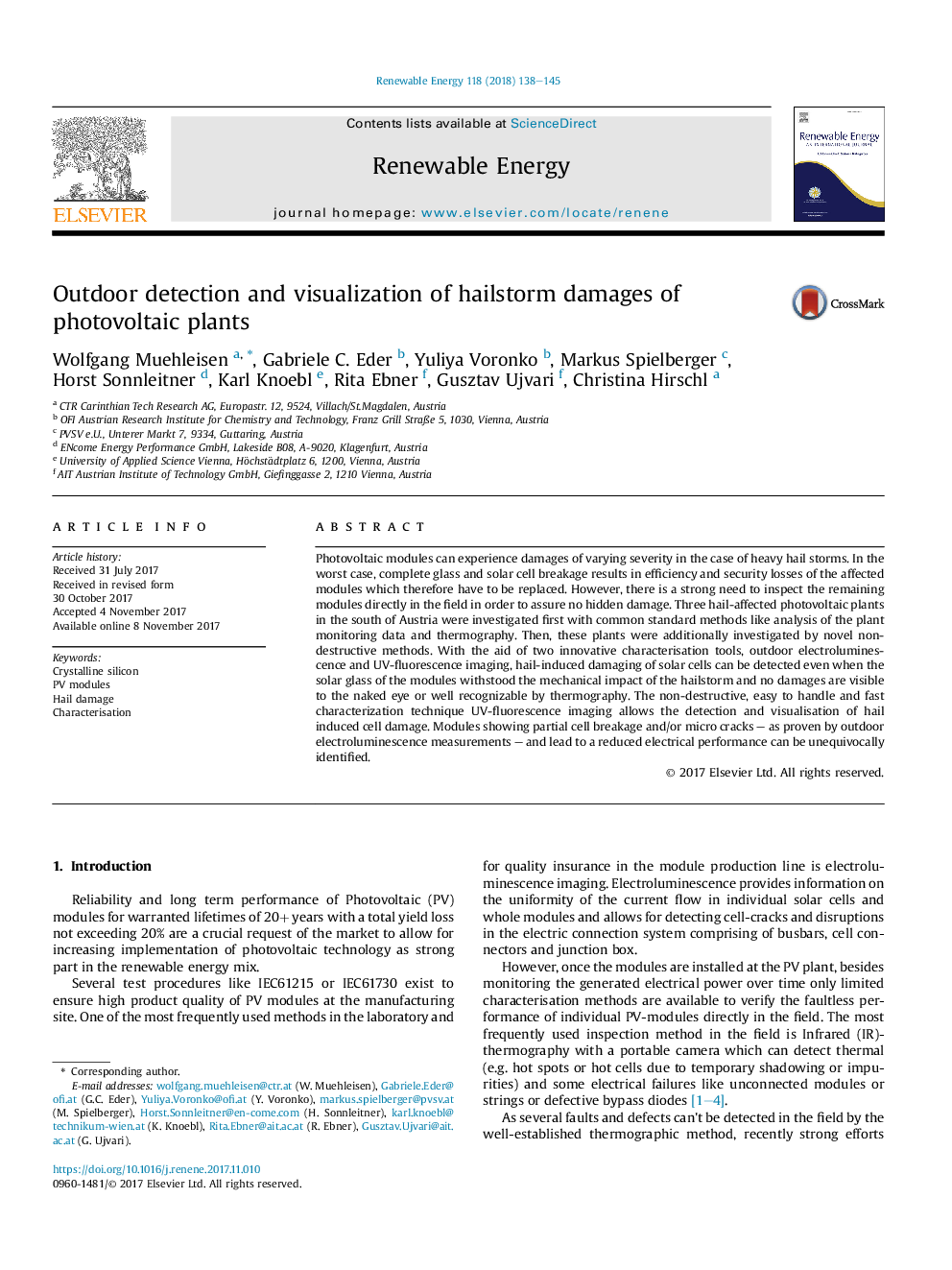| Article ID | Journal | Published Year | Pages | File Type |
|---|---|---|---|---|
| 6764932 | Renewable Energy | 2018 | 8 Pages |
Abstract
Photovoltaic modules can experience damages of varying severity in the case of heavy hail storms. In the worst case, complete glass and solar cell breakage results in efficiency and security losses of the affected modules which therefore have to be replaced. However, there is a strong need to inspect the remaining modules directly in the field in order to assure no hidden damage. Three hail-affected photovoltaic plants in the south of Austria were investigated first with common standard methods like analysis of the plant monitoring data and thermography. Then, these plants were additionally investigated by novel non-destructive methods. With the aid of two innovative characterisation tools, outdoor electroluminescence and UV-fluorescence imaging, hail-induced damaging of solar cells can be detected even when the solar glass of the modules withstood the mechanical impact of the hailstorm and no damages are visible to the naked eye or well recognizable by thermography. The non-destructive, easy to handle and fast characterization technique UV-fluorescence imaging allows the detection and visualisation of hail induced cell damage. Modules showing partial cell breakage and/or micro cracks - as proven by outdoor electroluminescence measurements - and lead to a reduced electrical performance can be unequivocally identified.
Related Topics
Physical Sciences and Engineering
Energy
Renewable Energy, Sustainability and the Environment
Authors
Wolfgang Muehleisen, Gabriele C. Eder, Yuliya Voronko, Markus Spielberger, Horst Sonnleitner, Karl Knoebl, Rita Ebner, Gusztav Ujvari, Christina Hirschl,
